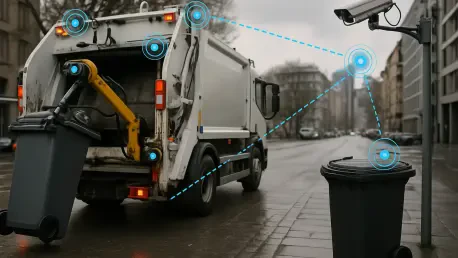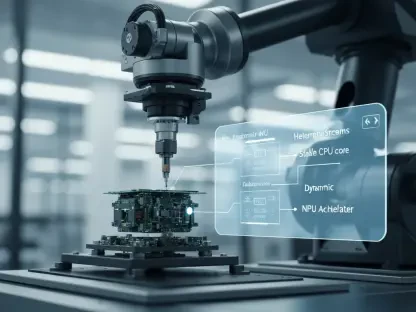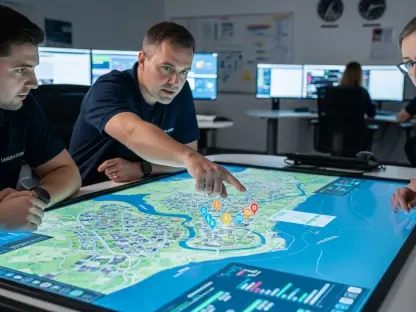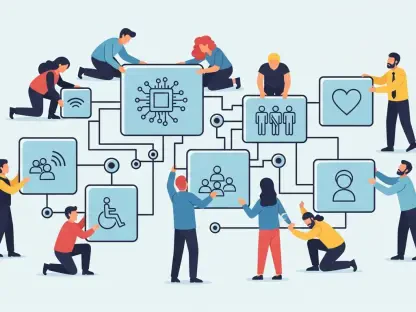Urban waste management has become a significant global challenge as cities continue to expand and generate waste at unprecedented levels. The increasing volume of waste poses serious environmental and public health issues, necessitating innovative solutions to manage urban waste efficiently. As cities strive to become more sustainable, technology emerges as a key player in revolutionizing traditional waste management systems. Technological advancements offer opportunities to address challenges such as labor disputes, workforce safety, and operational inefficiencies, promising a more sustainable and effective approach to urban waste management.
Labor Disputes and Their Impact
Workforce Challenges in Waste Management
Labor disputes have long been a contentious issue in the waste management sector, often resulting in disruptions to regular collection services. In cities like Birmingham, these disputes have highlighted the vulnerabilities in current waste management systems, especially when it comes to worker safety and fair compensation. As the workforce ages, the sector faces difficulties in attracting new employees to hazardous and undervalued positions. To overcome these challenges, there is a pressing need to transition these roles into safer and well-compensated opportunities. Leveraging technology could play a significant role in this transformation, ensuring a more stable and motivated workforce.
The labor dispute between Birmingham City Council and the Unite union underscores the need for a more sustainable and resilient waste management strategy. The accumulation of uncollected waste during such standoffs poses health and environmental risks, tarnishing the city’s standing and deterring visitors. An effective resolution could involve retraining workers for higher-value roles supported by advanced technology. Implementing such measures could lead to improved job satisfaction and efficiency, ultimately minimizing the risk of future disputes while ensuring uninterrupted services.
Technology as a Mediator in Labor Dynamics
The integration of technology into waste management systems presents an opportunity to mediate labor dynamics by improving working conditions and efficiency. Automation, robotics, and AI-driven solutions can relieve workers from strenuous manual tasks, reducing the occurrence of workplace injuries and fatalities. For instance, automated refuse collection vehicles can simplify the collection process, making it safer while simultaneously boosting productivity. Providing training and upskilling opportunities can help workers transition into new roles, ensuring they remain valuable assets in a technologically advanced waste management landscape.
In addressing labor-related issues, technology not only ensures safety and fair compensation but also enhances operational efficiency. With the introduction of systems like automated side-loader trucks, the dependency on human labor for waste collection can be reduced. Such innovations free up human resources to focus on more strategic, value-added tasks, supporting a fair balance between automation and human input. The combined efforts of technological advancements and skilled labor force integration are essential for creating a harmonious and efficient urban waste management ecosystem.
Technological Innovations Transforming Waste Management
Robotics and AI in Collection Systems
The advent of robotics and artificial intelligence is reshaping waste collection systems by enhancing productivity and addressing safety concerns. Cities across the globe have started integrating smart bins, machine learning applications, and automated refuse vehicles to revolutionize waste management practices. These technologies streamline operations, ensuring waste collection is completed efficiently and safely. By learning from diverse systems implemented in the USA, Canada, and Europe, urban centers can adopt best practices suited to their unique circumstances.
Robotic trucks represent a major leap forward in simplifying waste collection processes. These technologically advanced vehicles are equipped to handle waste collection with minimal human intervention, minimizing health risks to workers. Additionally, smart bins with sensors can detect when bins need to be emptied, enabling predictive waste management tailored to real-time needs. These innovations significantly enhance efficiency, reduce operational costs, and improve service delivery across large urban areas.
The Role of Smart Bins and Sensors
Smart bins have become an integral part of modern waste management solutions, offering a high level of adaptability and efficiency. These bins are equipped with sensors capable of monitoring the waste levels, ensuring timely collection and reducing the instances of overflowing bins. By predicting utilization patterns, smart bins enable optimized collection schedules, thereby enhancing resource allocation and environmental sustainability. This is particularly beneficial in urban areas where waste generation is rapid and constant, helping cities manage demand effectively.
Moreover, the utilization of smart bins contributes to a cleaner urban environment by preventing waste pile-ups and related health hazards. Data collected through these devices can inform AI-driven analytics, offering insights into consumption patterns and waste generation trends. Cities can use this data to tailor their waste management strategies, implementing measures that improve waste reduction and recycling efforts. In conjunction with robotics, smart bins represent a holistic approach to waste management that aligns with modern urban sustainability goals.
Comprehensive Technology Integration
Systemic Approaches to Waste Management
Adopting a comprehensive approach to waste management is critical for fully leveraging available technologies. Incremental technological interventions alone are insufficient; instead, a systemic integration encompassing automated vehicles, data analytics, and citizen engagement is necessary. For instance, automated side-loader trucks operating in cities like Stockholm and Toronto demonstrate how such systems can significantly improve waste management. These vehicles can safely and efficiently navigate urban settings, reducing the need for human labor in risky environments.
The systemic integration of technology into waste management requires investment in infrastructure and collaboration between policymakers, technology providers, and local communities. Harnessing sensors’ capabilities in vehicles and bins can produce valuable data on waste distribution patterns, enabling AI algorithms to optimize collection routes and schedules. By adopting a data-driven approach, waste management services can enhance their efficiency and adaptability, reducing greenhouse gas emissions and environmental impact. Integrating citizens into the process through education and behavior change initiatives ensures a cohesive move toward sustainability and efficiency.
Challenges in Implementation and Adaptation
Despite the promise of technology, widespread integration is not without its challenges. Implementing such systems requires not only significant investment but also a willingness to adapt existing infrastructure and practices. Narrow streets and historical areas may pose difficulties for the adoption of automated vehicles, emphasizing the need for innovation and customization in system design. Additionally, adapting to new technologies involves overcoming resistance to change and educating stakeholders about the benefits and opportunities presented by these advancements.
A collaborative approach can help navigate the complexities of implementation and adaptation. Engaging stakeholders, including city officials, waste management companies, and residents, is key to aligning technology with urban landscapes. Encouraging public-private partnerships can drive investment and expertise into projects, while citizen education campaigns foster understanding and enthusiasm for new technologies. By addressing these challenges, cities can fully realize the benefits of integrated waste management solutions that are characterized by resilience, adaptability, and sustainability.
The Future of Waste Management
Integration of Emerging Technologies
The trajectory of waste management is leaning heavily toward the integration of emerging technologies designed to tackle inefficiencies and enhance sustainability. Pneumatic waste collection systems, for example, are gaining traction as an innovative approach to reduce reliance on traditional waste collection methods. These systems use high-speed fans to move waste through underground pipes to central collection points, showcasing an efficient solution adopted by over 30 countries. The simplicity of these systems in reducing frequent collections has proven beneficial in densely populated urban environments.
Other advancements, such as advanced imaging techniques and chemical analysis, offer promising pathways for material sorting and hazardous waste identification. These technologies allow for automation in areas still reliant on manual intervention, increasing the recovery rate for recyclable materials and reducing the need for landfill use. While implementation scales and local conditions may vary, these technological solutions demonstrate an adaptable framework for addressing waste management issues in cities worldwide, leading to cleaner, more sustainable urban living.
Human and Technological Synergy
Managing urban waste has become a major global issue as cities grow and produce waste at unprecedented rates. The swelling volume of waste presents serious environmental and public health challenges, compelling the need for innovative solutions to manage it effectively. As cities aim to enhance their sustainability, technology is emerging as a crucial factor in transforming traditional waste management methods. Advancements in technology create new opportunities to tackle issues such as labor disagreements, worker safety, and operational inefficiencies, thereby promising a more sustainable and efficient urban waste management approach. Smart waste bins equipped with sensors, for instance, can optimize collection routes, reducing fuel consumption and emissions. Moreover, waste-to-energy technologies convert waste into energy, offering cities a way to reduce landfill use while generating electricity. By embracing such technologies, cities can not only improve their waste management systems but also move towards a more sustainable future, protecting both the environment and public health.









